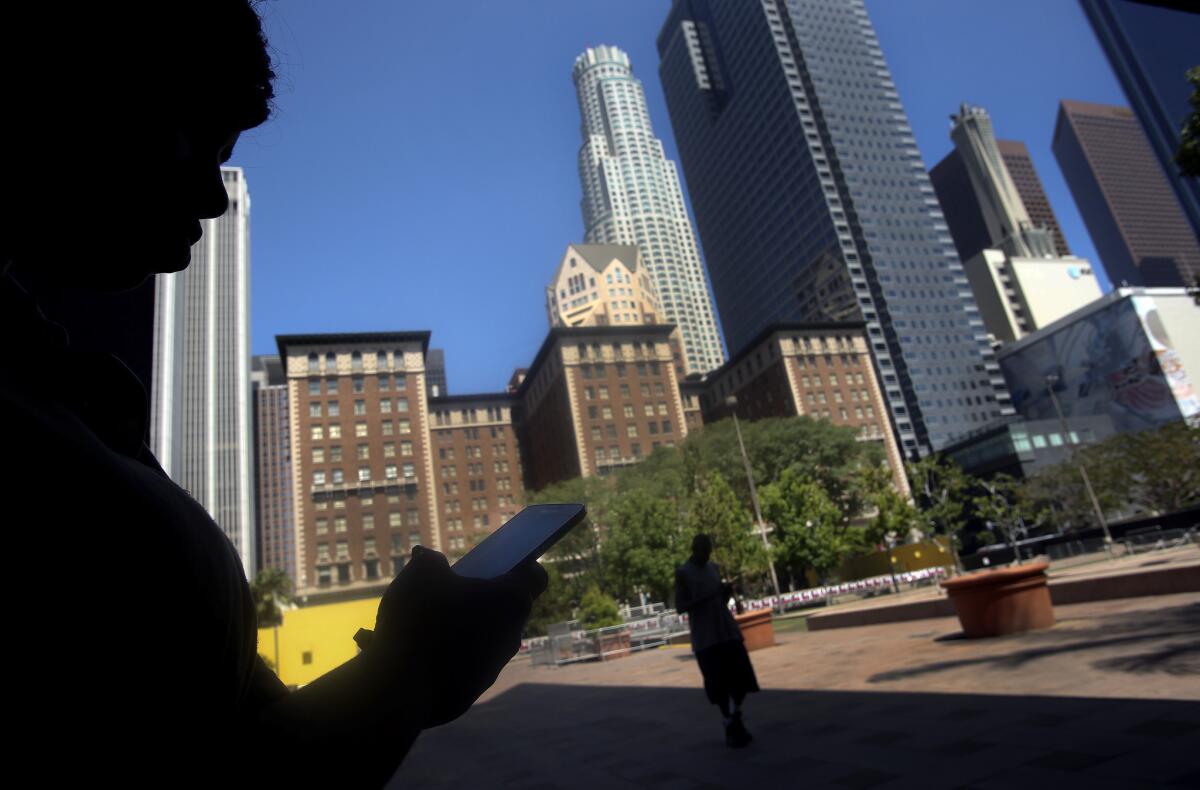More for your money: Make Wi-Fi work for you while on the road

- Share via
Internet connectivity on the road can be inconsistent at best. Parts of rural America have limited cellphone reception, and airport Wi-Fi speeds can be spotty, to say the least. Still, you don’t have to spend hundreds on Wi-Fi hot spots if you have a few tricks up your sleeve.
• Shortly after my husband and I decided to sell the house and travel full time, we realized our old-model GPS wasn’t able to find venues (Starbucks, McDonald’s) known for offering free Wi-Fi to customers. Upgrading to a newer version allowed us to scope those out. It was a small investment for a large return.
• When you check into a hotel room that’s offering free Wi-Fi, check the signal strength before you unpack. The built-in network finders on our smartphone and Kindle let us connect and check the signal strength in our hotel room before the first socks go in the drawers. If the connection is sluggish, we can request a room closer to the router.
• A hotel may have free Wi-Fi, but it sometimes allows only one device per room. This may be OK if you’re traveling solo, but two people who depend on wireless will end up in a wrestling and/or shouting match. One solution is Connectify (www.connectify.me), software that turns your phone or PC (you must have Windows 7 or 8) into a router.
A free version of the program is available, although it times out after brief intervals. If you find yourself in need of Connectify on a regular basis, the $40 lifetime pro version might be worth the investment.
• Make the most of the Wi-Fi you do have when you have it. When our hotel has exceptional Wi-Fi speeds, we make it a point to work until as close to checkout time as possible. If we’re not on a schedule — that is, we don’t have to be at our next location at a certain time — we sometimes will ask for late checkout if the hotel allows it for no extra charge.
If you don’t have a connection where you’re going but you need to, say, schedule social media posts, consider apps or software that allow you to do that. HootSuite, for example, gives you scheduling flexibility. Frequent traveler Raymond Walsh uses an app called Buffer, which allows users to create a custom schedule of posts at selected times across multiple social media platforms.
The software has a free trial version and a $10 per month professional plan that allows up to 100 scheduled posts per day across 10 social media channels.
• Set your priorities. If you don’t have great Internet access but you have a lot of material to go through, make the hard choices about your online activity. Social media interaction may be an enjoyable part of your day, but if it doesn’t relate directly to how you make your living, you may need to skip it.
Disciplined email management is also critical. Is it time to unsubscribe from some of the emails you’re receiving? Take a hard look when you have good Internet access so that when you don’t you won’t waste your time (or online time) sorting through throwaway stuff. If the correspondence you’re receiving is unsolicited, put it in an electronic folder to read later. Address critical emails first.
Otherwise, you may spend more time than you want sitting in coffee shops or fast-food joints reading emails about the latest deals. Not that there’s anything wrong with that, but time — especially without Wi-Fi — is money.
More to Read
Sign up for The Wild
We’ll help you find the best places to hike, bike and run, as well as the perfect silent spots for meditation and yoga.
You may occasionally receive promotional content from the Los Angeles Times.






